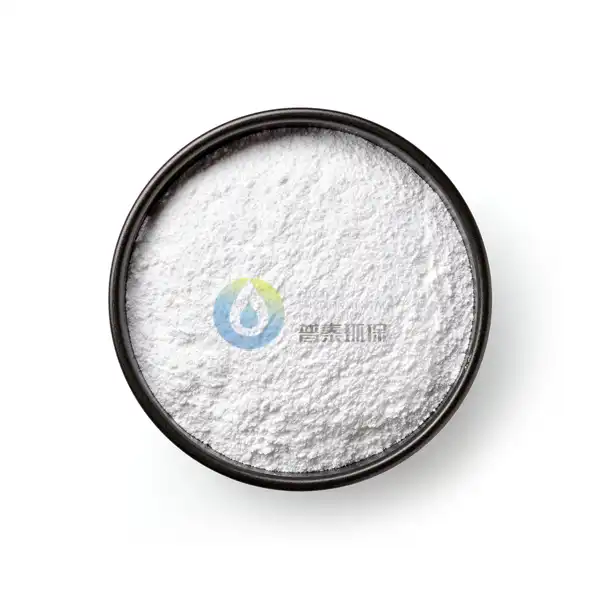What is the Difference Between SOP Fertilizer and Potassium Nitrate?
Understanding the distinctions between different types of fertilizers is crucial for agricultural success. SOP (Sulfate of Potash) fertilizer and potassium nitrate are both important potassium sources, but they differ significantly in their composition, application methods, and effects on plant growth. While potassium nitrate combines potassium with nitrogen in the form of nitrate, SOP provides potassium along with sulfur, leading to distinct advantages for specific crops and growing conditions.
What makes SOP fertilizer better for chloride-sensitive crops?
SOP fertilizer, also known as potassium sulfate (K₂SO₄), has emerged as the preferred choice for chloride-sensitive crops due to its unique chemical composition and beneficial properties. Unlike other potassium fertilizers that contain chloride, SOP Fertilizer provides plants with essential nutrients without the risk of chloride toxicity. This characteristic makes it particularly valuable for crops such as tobacco, potatoes, citrus fruits, and various vegetables that exhibit sensitivity to chloride levels in the soil.
The absence of chloride in SOP fertilizer allows for safer application at higher rates, especially in areas where soil salinity is a concern. The sulfate component (SO₄²⁻) serves a dual purpose by not only delivering potassium but also providing sulfur, an essential secondary nutrient that plays a vital role in protein synthesis and chlorophyll formation. This dual-nutrient delivery system ensures that plants receive balanced nutrition while maintaining optimal soil conditions.
Furthermore, research has shown that SOP fertilizer contributes to improved crop quality characteristics. Fruits and vegetables grown with SOP often display better color, taste, and storage properties. The enhanced sugar content and improved shelf life of produce have been attributed to the chloride-free nature of SOP and its sulfur component. These quality improvements are particularly noticeable in potato cultivation, where SOP usage leads to higher dry matter content and reduced bruising susceptibility.
The soil chemistry benefits of SOP Fertilizer extend beyond its primary nutritional value. The fertilizer helps maintain a favorable soil pH and doesn't contribute to soil acidification, which can be a concern with other potassium fertilizers. This pH stability ensures better nutrient availability and promotes healthy root development, leading to more efficient nutrient uptake and stronger plant growth throughout the growing season.
How does the nitrogen content in potassium nitrate affect plant growth?
Potassium nitrate (KNO₃) stands out among fertilizers due to its unique combination of potassium and nitrogen in nitrate form, which significantly influences plant growth and development. The nitrogen component in potassium nitrate is immediately available to plants, making it an excellent choice for rapid growth promotion and quick correction of nutrient deficiencies. This readily available form of nitrogen is particularly beneficial during critical growth stages when plants require immediate nutrient uptake.
The nitrate form of nitrogen in potassium nitrate offers several distinct advantages over other nitrogen sources. Unlike ammonium-based fertilizers, nitrate nitrogen can be directly assimilated by plants without requiring energy-intensive conversion processes. This efficiency in nitrogen utilization results in faster growth responses and more effective nutrient management. Additionally, the nitrate form helps maintain a more balanced soil pH, as it doesn't contribute to soil acidification that often occurs with ammonium-based fertilizers.
The synergistic effect between potassium and nitrate nitrogen in potassium nitrate creates optimal conditions for various physiological processes within plants. This combination enhances photosynthetic efficiency, improves water use efficiency, and strengthens cell wall development. Plants treated with potassium nitrate often exhibit improved stress tolerance, better fruit quality, and enhanced disease resistance due to the balanced nutrient supply and the specific roles of both potassium and nitrate nitrogen in plant metabolism.
Moreover, the high solubility of potassium nitrate makes it an ideal choice for fertigation systems and foliar applications. This characteristic allows for precise nutrient delivery and flexible application timing, particularly beneficial in intensive agricultural systems and greenhouse production. The quick dissolution and rapid uptake ensure that plants receive nutrients when they need them most, supporting optimal growth and development throughout the growing cycle.
What is the cost-effectiveness comparison between SOP and potassium nitrate fertilizers?
The economic aspects of choosing between SOP and potassium nitrate fertilizers involve multiple factors beyond simple price comparisons. While initial purchase costs often show SOP Fertilizer as the more economical option, the true cost-effectiveness analysis must consider factors such as application rates, nutrient concentration, crop-specific benefits, and long-term soil health impacts.
SOP typically offers a more cost-effective solution for broad-acre applications due to its lower price per unit of potassium and the added value of sulfur content. The dual-nutrient nature of SOP means farmers often can reduce or eliminate separate sulfur applications, leading to savings in both product and application costs. Additionally, the longer residual effect of SOP Fertilizer in the soil often allows for reduced application frequency compared to more soluble fertilizers.
However, potassium nitrate's higher solubility and concentrated nutrient content can make it more cost-effective in specific situations, particularly in protected cultivation and high-value crop production. The immediate availability of both potassium and nitrogen can reduce the total amount of fertilizer needed, while the precision of application through fertigation systems can optimize nutrient use efficiency. The reduced risk of leaf burn and compatibility with most other fertilizers in solution also contribute to its cost-effectiveness in certain applications.
A comprehensive economic analysis must also consider the crop value and quality improvements associated with each fertilizer type. For high-value crops sensitive to chloride, the premium price of SOP is often justified by improved crop quality and higher market prices. Similarly, the rapid response to potassium nitrate applications can be economically advantageous when dealing with nutrient deficiencies in high-value crops where yield and quality directly impact profitability.
Long-term soil health considerations also play a crucial role in cost-effectiveness evaluation. SOP Fertilizer's contribution to soil sulfur levels and its neutral effect on soil pH can reduce the need for additional soil amendments over time. Conversely, potassium nitrate's clean dissolution and lack of residual effects might require more frequent applications but can offer better control in precision farming systems.
Xi'an Putai Environmental Protection Co., Ltd. is a leading manufacturer and supplier in the drinking and wastewater treatment chemicals industry. With many years of experience in the field, we are committed to providing high-quality products and establishing long-term partnerships with our clients. Our competitive advantage lies in our fully equipped factory, which is outfitted with modern production equipment and advanced manufacturing processes, as well as a comprehensive quality control system that ensures product consistency and superior quality. Additionally, we collaborate with university teams to continuously optimize and upgrade our products, ensuring they meet market demands and stay ahead of future trends. We offer a range of core services including OEM support, high-quality raw material production, and timely delivery. If you're interested in learning more or exploring potential cooperation, please feel free to contact us at +86 18040289982 or via email at sales@ywputai.com. We look forward to the opportunity to work with you.
References:
1. Journal of Plant Nutrition (2023). "Comparative Analysis of Potassium Fertilizers in Modern Agriculture"
2. Soil Science Society of America Journal (2023). "Impact of Different Potassium Sources on Crop Quality"
3. Agricultural Systems (2024). "Economic Evaluation of Fertilizer Choices in Intensive Farming"
4. Plant and Soil (2023). "Nutrient Uptake Patterns in Chloride-Sensitive Crops"
5. HortScience (2023). "Fertilizer Efficiency in Protected Cultivation Systems"
6. Nutrient Cycling in Agroecosystems (2024). "Long-term Effects of Potassium Fertilization Strategies"
7. Journal of Agricultural and Food Chemistry (2023). "Quality Parameters in Crops Under Different Fertilization Regimes"
8. Frontiers in Plant Science (2024). "Nitrogen and Potassium Interactions in Plant Nutrition"
9. European Journal of Agronomy (2023). "Cost-Benefit Analysis of Premium Fertilizers in Agriculture"
10. Advances in Agronomy (2024). "Modern Perspectives on Potassium Nutrition in Agriculture"
RECOMMENDATIONS
_1729216561998.webp) VIEW MORESop Water Soluble Fertilizer
VIEW MORESop Water Soluble Fertilizer_1729216311056.webp) VIEW MOREPotassium Magnesium Sulfate Fertilizer
VIEW MOREPotassium Magnesium Sulfate Fertilizer_1729215837243.webp) VIEW MOREPotassium Sulfate Organic Fertilizer
VIEW MOREPotassium Sulfate Organic Fertilizer_1729215772183.webp) VIEW MOREPotassium Sulfate Fertilizer 0-0-53
VIEW MOREPotassium Sulfate Fertilizer 0-0-53 VIEW MOREOrganic Potassium Sulfate Fertilizer
VIEW MOREOrganic Potassium Sulfate Fertilizer_1729233544024.webp) VIEW MORESolid Potassium Sulfate Fertilizer
VIEW MORESolid Potassium Sulfate Fertilizer_1729215651315.webp) VIEW MOREFertilizer Potassium Sulfate
VIEW MOREFertilizer Potassium Sulfate_1729215530587.webp) VIEW MORESop Fertilizer
VIEW MORESop Fertilizer

